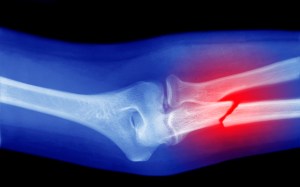The Internal Revenue Service announced another deadline extension for those still waiting to receive an Economic Impact Payment, also known as a stimulus check. Most Americans eligible for a stimulus check of at least $1,200 received theirs in the mail automatically. Still, millions of Americans who do not have to file taxes had to apply for a payment using the IRS’ Non-Filers tool. The deadline to use the tool was extended to Nov. 21 earlier this month. The tool will no longer be active after that date.
“We took this step to provide more time for those who have not yet received a payment to register to get their money, including those in low-income and underserved communities,” IRS Commissioner Chuck Retting said in an Oct. 5 statement. “The IRS is deeply involved in processing and programming that overlaps filing seasons. Any further extension beyond November would adversely impact our work on the 2020 and 2021 filing seasons. The Non-Filers portal has been available since the spring and has been used successfully by many millions of Americans.” The deadline extension is only for people who did not receive an EIP and do not normally file tax returns. The deadline for Americans who requested an extension to file their 2019 tx returns passed on Ot. 15.
Videos by PopCulture.com
The IRS sent out 9 million letters to Americans eligible for stimulus checks but do not usually file tax returns last month. The letter includes instructions on using the Non-Filers tool at the IRS website. Retting noted that time is “running out” for those eligible. “Registration is quick and easy, and we urge everyone to share this information to reach as many people before the deadline,” he said.
Millions of Americans automatically received their stimulus checks in April and May after Congress passed the CARES Act. The $1,200 payments were sent to Americans who made $75,000 or less in annual income. Americans who file jointly and have a combined income of $150,000 or less received $2,400 payments. Individual Americans who made between $75,000 and $99,000 received less than $1,200, and any American making over $99,000 was not eligible for any payment. The program also included a $500 payment for dependents under 17 years old.
The IRS sent the payments to Americans either as a direct deposit, a physical check in the mail, or a pre-paid debit card. Most Americans who do not need to file taxes are low-income. The Non-Filers tool was designed for married couples earning below $24,000 and individuals earning below $12,200. They can choose to receive the payment either as a direct deposit or physical check. Americans can still use the “Get My Payment” tool to track their payments.









